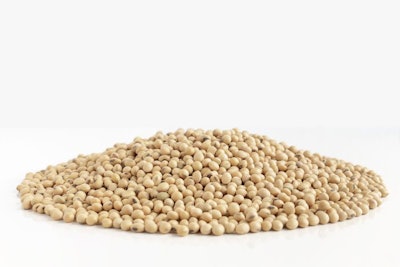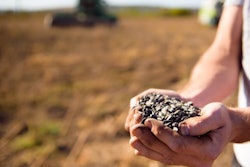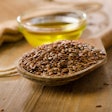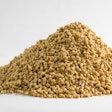
Marketing of this ingredient is increasing
Cleaned soybeans are cracked and hulls removed before the remaining seed is further processed to extract the oil. At the end of the process, hulls are added back into the meal as a way of disposing them. This reduces total crude protein from 48% in a meal without hulls to about 44% with all hulls added to it. In most countries, soy hulls are invariably added back to the meal, but the marketing of hulls is increasing, with the U.S. taking the lead.
Raw soybean hulls need to be heat treated to reduce urease activity. They are often ground because they are fluffy and bulky and then transformed into a dense pellet that is transported and handled with greater ease. Some manufacturers prefer ground hulls in order to incorporate them into their own final feeds or feed supplements.
Soy hulls are rich in fiber, with 38% crude fiber, 65% NDF, and 46% ADF. A good part of their fiber profile is composed of pectins, something that gives soy hulls a special place in ruminant nutrition. By the way, soy hulls are poor in lignin, containing about 2%, giving them a lesser laxative effect compared with other high-fiber ingredients. Finally, it should be noted soy hulls contain appreciable levels of protein (13%) and it is particularly rich in potassium (1.5%). It also contains very high levels of iron (600-700 ppm) that should be taken into account when formulating feeds with high levels of soy hulls.
In feedlot beef rations, soy hulls should not replace other roughages but rather cereals due to its high energy value and low particle size. However, there should be an upper limit in soy hull inclusion levels in all feedlot beef rations because hulls are highly fermentable by rumen microbiota. This fact can lead to excessive gas production and abnormal distention of the whole abdomen area. In fact, ad libitum access to soy hulls should be avoided exactly because of this problem, which is combined by the extremely high palatability of this ingredient. Adding high levels of soy hulls does not cause acidosis issues as is the case with other highly fermentable ingredients (rich in starch).
Interestingly, soy hulls combine well with ingredients such as urea and molasses providing a less expensive way of finishing beef cattle. In addition, soy hulls are an excellent ingredient for intensive and extensive beef fattening systems, used accordingly to the requirements of each system’s nutrient specifications. If soy hulls are used to replace part of the roughage fraction of the daily ration, then other roughage material with long-stem parts should be included to ensure optimal rumination of the whole diet.
Finally, soy hulls should not be confused with soy mill run. The latter is a product that contains not only soy hulls but also other material, such as foreign matter, broken grains, damaged grains, and anything else the mill might consider as disposable in this manner. Soy mill run is a highly variable ingredient that should not be used interchangeably with clean soy hulls.
















